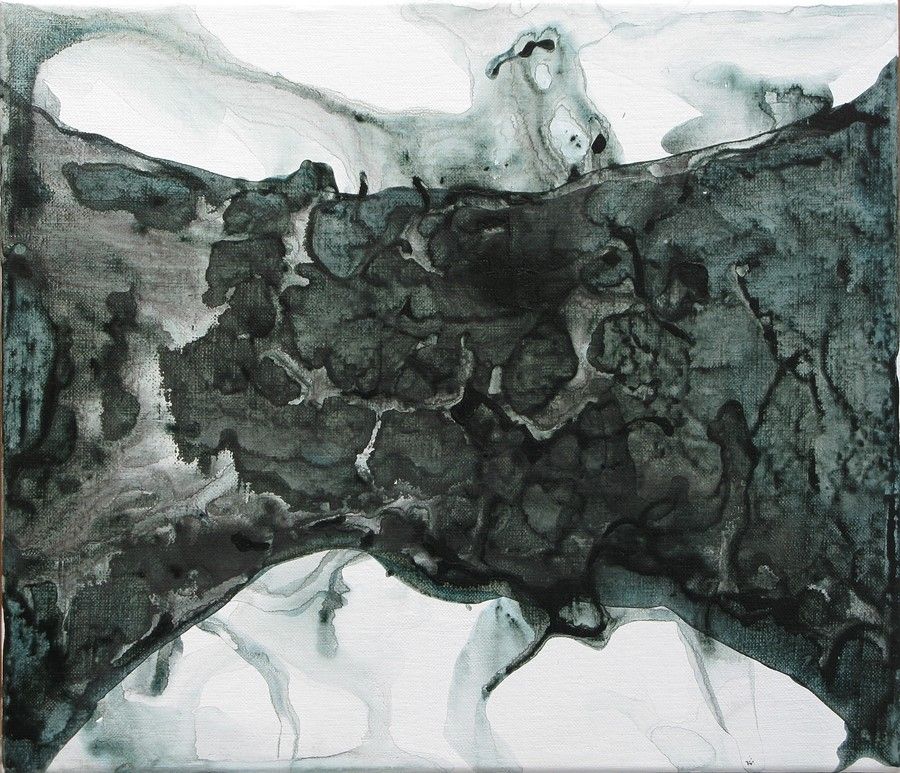

Paintings
It is nearly three years since I last wrote anything in this story, and the next show approaches.* So there is a body of new work to understand and explain. But did my painting just continue in a natural progression from the last exhibition? Not at all! Once more, there was a decisive deviation from the expected straight line of progress, and I must tell you a little about how this came to be. Since you have probably been reading the previous pages, you will be aware that I was working in a very minimal way with watery acrylics, both on paper and on canvas. All this was about to change. Once the show was out of the way, I found myself looking at what I had been doing, and assessing where it had succeeded and where it had failed.
* This was written around 2012
I certainly found myself wanting something more from the surface than this water-color like effect. And, more importantly, I wanted something more in terms of what the images were saying, or rather, where the voice was coming from. It probably sounds a bit strange to talk about whose voice might be speaking in the paintings, but if you have read what I was writing about the last phase of my work, then you will realise that I was engaged in trying to express the 'voice' of nature, rather than my own. You could argue that this is impossible, but that didn't stop me trying. Though it might be difficult, I think it is actually possible to do this. In order to do it, one must accept more of a role of midwife than mother - the painting is born out of forces beyond and outside of oneself. Certainly, it is about putting ones own mind and culture to one side, and allowing natural dynamics to sculpt and fashion the image.
I have followed similar paths in the past, for instance when I became absorbed in mathematical systems as generators of images (see the image on this page from 1978). In this kind of work, there is always plenty to remind the viewer that there is a human being at work here, not unbridled nature, but the object of the exercise is to put one's own concerns to one side and allow natural forces to have their play, as much as possible. When I came to look closely, however, at my 'natural' works, I felt there was something lacking. It wasn't that I felt what I had to say was more meaningful than these forms that were emerging, but when I compared them with other work I've done, I found something interesting in some of that other work, that I hadn't quite grasped before.
I found myself focussing on a particular period of work around 1986-7. This was another time when I had veered off quite rapidly from the way I had been painting just previously. Whereas in 1984-5 the paintings were predominantly figurative, or landscape based, in my 1987 show at Pinacotheca, there wasn't a figure to be seen, and any reference to landscape had become seriously abstracted. What was it about these paintings that I now felt drawn towards after all this time?
I think the key here is not so much what was new in the paintings which emerged around 1986, but rather what continued through from the previous, more clearly figurative work. I was changing everything at the level of paint application, touch and the forms, especially in their relationship to brushstrokes, but in doing so, I managed to keep something in the broader composition which is now of particular interest to me. The two pictures here share some elements of composition and mood but they also share an element that I find difficult to describe, and whose source I cannot clearly define. It is something related to an environment of possibility - a space constructed around a moment in time where the next moment is undefined, almost infinite in potential. It is a space of anticipation.